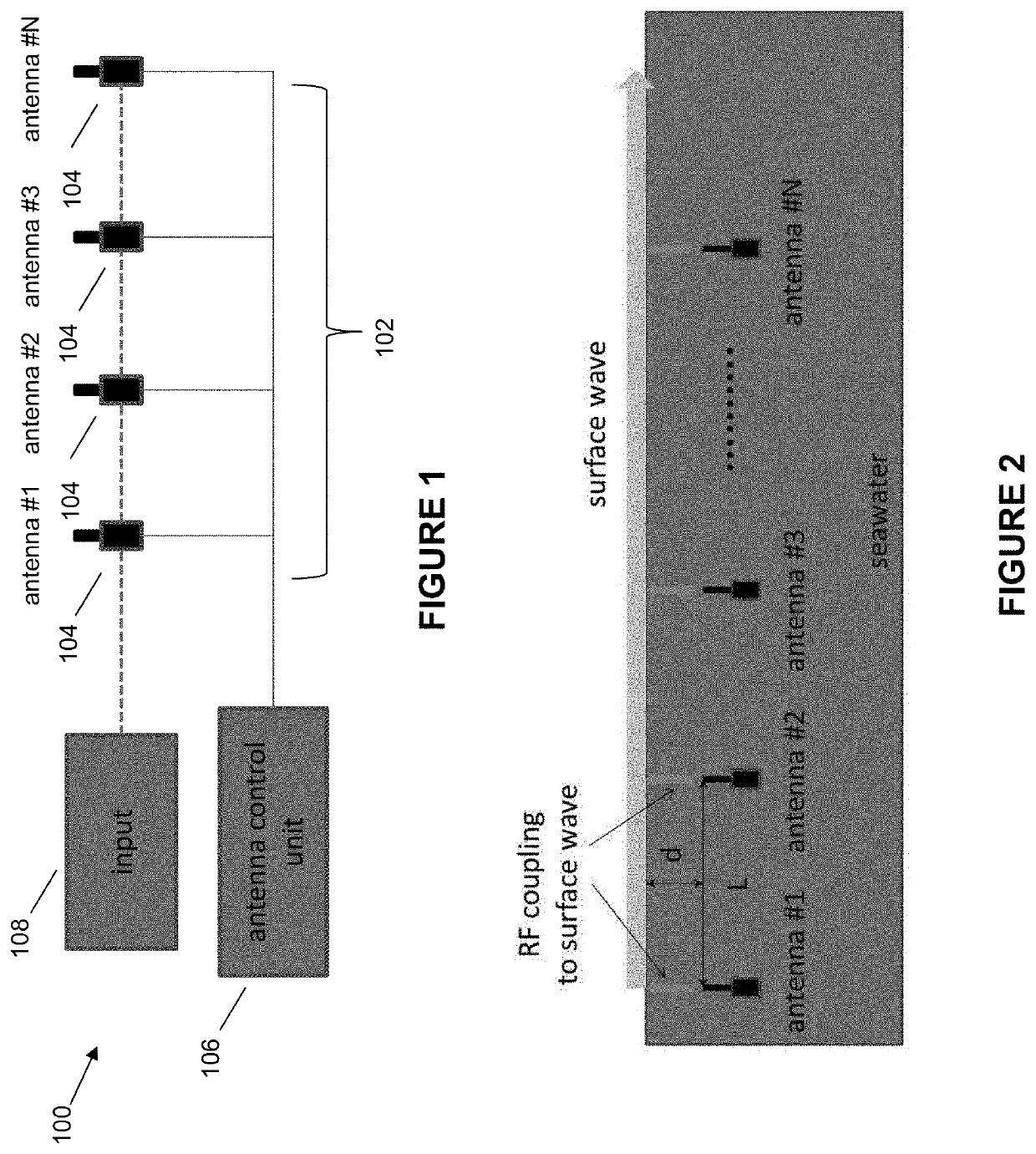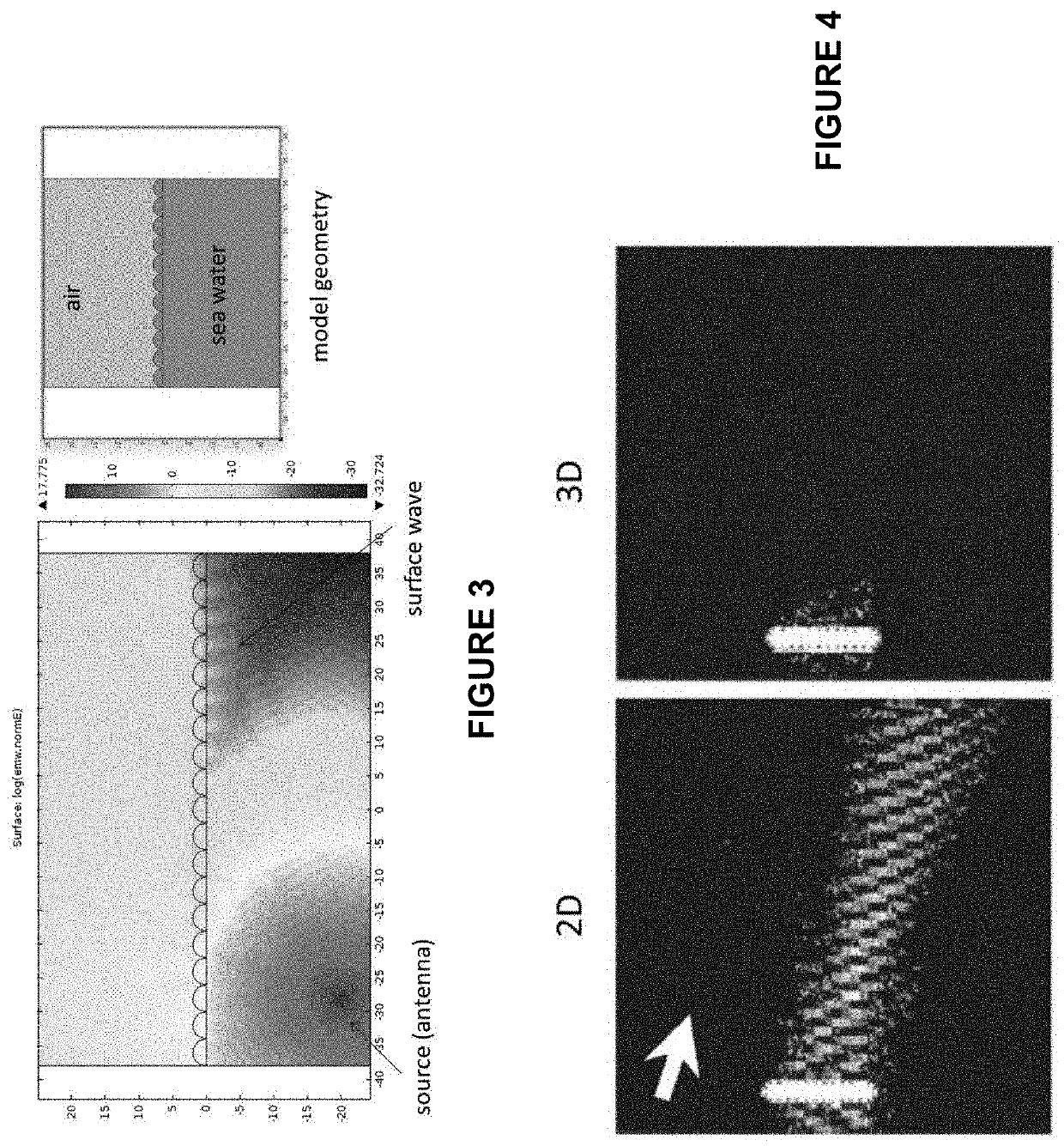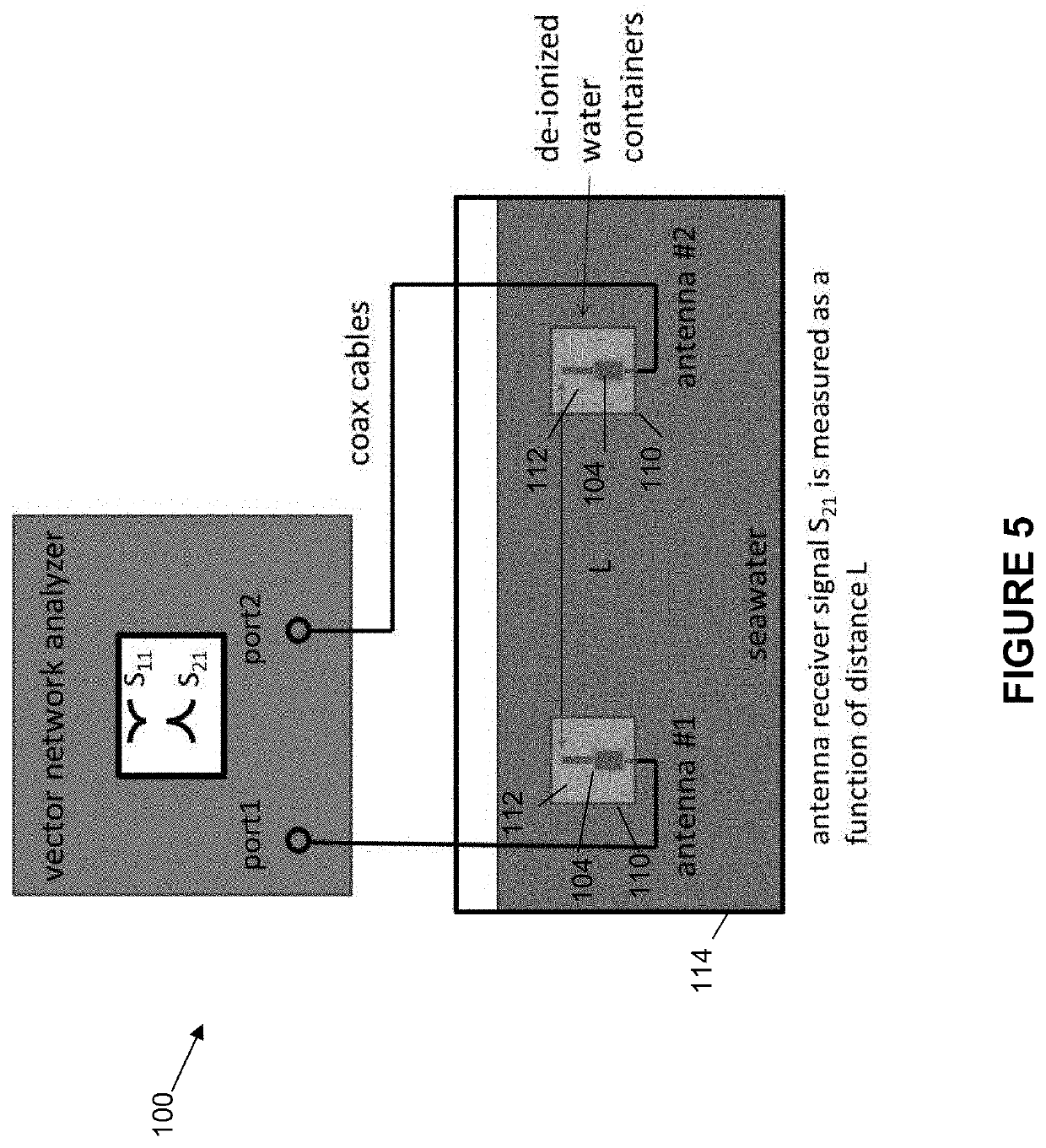Communication and sensor techniques for underwater radio communication
a radio communication and sensor technology, applied in the field of advanced underwater radio frequency communication and sensor networks, can solve the problems of limited performance of conventional rf communication schemes in water, difficult implementation of radio signals for long distance undersea communication, and severe limitations in the ability to communicate over distance in water, so as to improve the coupling of electromagnetic energy, reduce power losses, and improve the effect of impedance matching efficiency
- Summary
- Abstract
- Description
- Claims
- Application Information
AI Technical Summary
Benefits of technology
Problems solved by technology
Method used
Image
Examples
Embodiment Construction
[0032]In the following description, for the purposes of explanation, numerous specific details are set forth in order to provide a thorough understanding of the embodiments of the invention. It will be appreciated, however, by those having skill in the art that the embodiments of the invention may be practiced without these specific details or with an equivalent arrangement. In other instances, well-known structures and devices are shown in block diagram form in order to avoid unnecessarily obscuring the embodiments of the invention.
[0033]Structure and Operation of a Communication and Sensor Network
[0034]FIG. 1 shows a communication and sensor network 100 in accordance with the present invention which comprises a mechanical antenna array 102 comprising a plurality of antenna elements 104 to receive and transmit radio frequency (RF) signals. The antenna array 102 may be defined as a set of individual antenna elements 104 used for transmitting and / or receiving RF signals, connected to...
PUM
 Login to View More
Login to View More Abstract
Description
Claims
Application Information
 Login to View More
Login to View More - R&D
- Intellectual Property
- Life Sciences
- Materials
- Tech Scout
- Unparalleled Data Quality
- Higher Quality Content
- 60% Fewer Hallucinations
Browse by: Latest US Patents, China's latest patents, Technical Efficacy Thesaurus, Application Domain, Technology Topic, Popular Technical Reports.
© 2025 PatSnap. All rights reserved.Legal|Privacy policy|Modern Slavery Act Transparency Statement|Sitemap|About US| Contact US: help@patsnap.com



